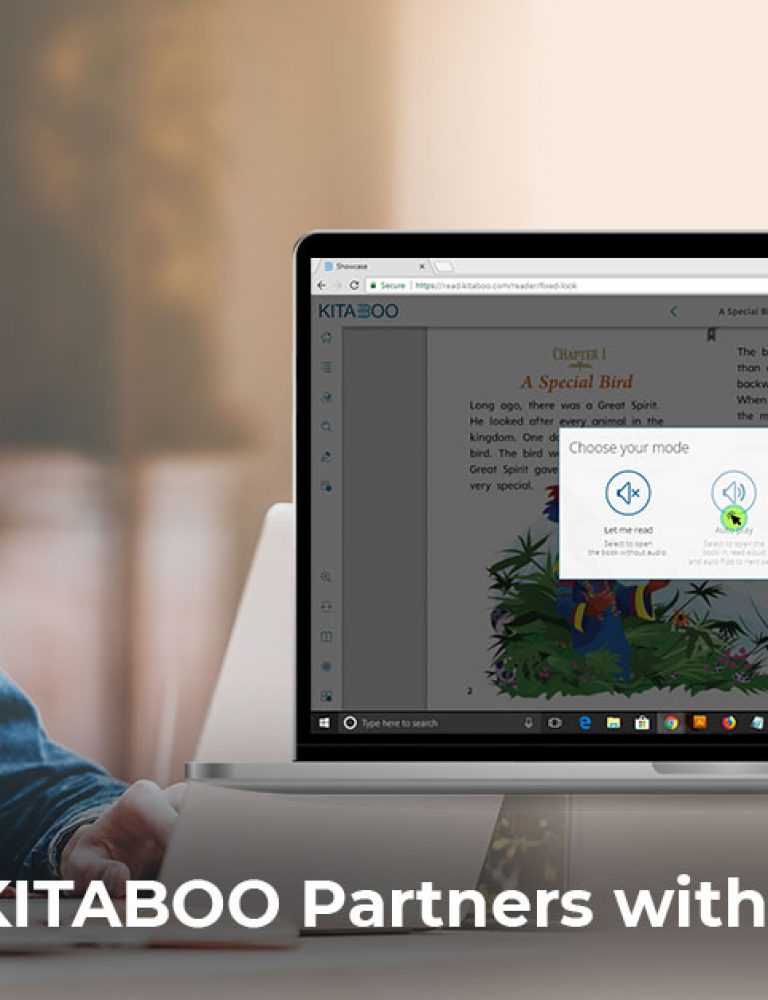Advancing digital technology has changed the face of publishing and education and increased the scope of interactive learning. Modern publication technology and online platforms like the KITABOO publishing platform have made education more engaging and effective.
Online publishing allows for new kinds of interactive content with advanced features compared to traditional printed books.
Since the pandemic, the global digital publishing market has grown as people increasingly read and consume news, entertainment, information, and educational material online. The digital publishing market is projected to reach a value of $68.81 billion by the year 2026, increasing at a CAGR of 13.4%.
Table of Contents
I. Interactivity and Digital Textbooks
II. Benefits of Interactive Digital Textbooks
- Engaging and Immersive Learning
- Convenient and Compatible
- Easier to Access Content
- Highlight and Copy-Paste
- Audio and Text-to-Speech Features
- Hyperlink Feature
- Fun and Collaborative
- Online Work and Assignments
- Actively Involve Learners
III. The Takeaway
Interactivity and Digital Textbooks
Advanced publication technology and new digital publishing platforms have created the possibility of more interactive features.
Using KITABOO’s digital textbook platform, you can create interactive digital textbooks with a variety of features. These include:
- Search function within the eBook
- External links within the eBook
- Highlighting and font adjustment
- Audio features
- Multimedia features
Features like multimedia and animations make reading more engaging and catch your audience’s attention at first glance, bringing your eBook to life. These elements are especially useful for educational eBooks as they make the content convenient for the reader.
By improving learner engagement, they also boost knowledge retention.
There are many ways to add interactivity to your digital textbooks. Once you have the layout and design, you can add animations and engagement elements that are particularly helpful for eLearning content.
You can also add special effects like touch-based page-turning, which are small characteristics that make for a more involving learning experience.
KITABOO’s digital textbooks have multimedia features like audio, video, and animation. Further, they come with a read-aloud feature so readers can listen to the content on the go. They integrate with multiple devices (smartphone, tablet, or laptop) and operating systems (iOS, Android, and Windows).
Benefits of Interactive Digital Textbooks
1. Engaging and Immersive Learning
By making the reading and learning process more absorbing, digital textbooks enable students to understand better. Through links within the textbook, you can easily access material like videos that make the content easier to visualize.
This is particularly useful for technical concepts. Underlining, highlighting, and other tools enable a more participative experience.
2. Convenient and Compatible
Digital textbooks can easily be converted to other formats like PDF and EPUB, such as KITABOO’s digital textbooks, which can also be accessed on a range of devices. This improved convenience and compatibility make for a smoother learning process.
You can share notes, references, and other information that can be easily accessed on laptops, phones, tablets, and other devices. Learners can also access materials offline on an e-reader.
3. Easier to Access Content
With digital textbooks, you can easily access highlights in one place.
You can also search for specific content within the textbook and easily navigate between different chapters. Font adjustment makes the reading process more comfortable and reader-centric.
4. Highlight and Copy-Paste
Digital textbooks come with useful features like highlight and copy-paste functions. Students can highlight key parts of the material to refer to later.
This also means that you don’t have to search the entire digital textbook to find the relevant highlight. It also saves you the trouble of manually copying out portions of the textbook.
5. Audio and Text-to-Speech Features
Audio and text-to-speech functions in digital textbooks allow readers to listen to the material instead of reading it.
This not only helps students to learn on the go but is also helpful for learners who have sight or hearing disabilities or reading difficulties.
6. Hyperlink Feature
The hyperlink function makes it possible for a student to click a hyperlink in the digital textbook and proceed to external content that elaborates the concept being described.
This illustrates what the text explains: for example, a video of a process could help the learner understand better. This function allows learners to access more engaging material on the subject, such as audio and video.
7. Fun and Collaborative
Digital textbooks can contain quizzes and multiple-choice questions that enable more interactive learning. Further, students can click on a word to find out the definition.
In addition to multimedia learning and hyperlinks, students also benefit from collaborative learning through sharing highlights and notes.
A teacher can assign a material or textbook to be read by a group of students, and the students and teacher can view each other’s notes and highlights on a common digital copy.
8. Online Work and Assignments
Digital textbooks enable students to shift between studying and online research on devices easily. This helps them engage better with educational material by connecting or elaborating it with related research.
It also makes working on assignments more convenient since they can smoothly switch between the text and the research while working.
Connecting reading assignments with research tasks is a great way for teachers to encourage students to integrate the material better. This also encourages them to get familiar with digital resources.
9. Actively Involve Learners
Digital textbook platforms like Kitaboo make it more convenient and easy for students to access learning material independently. For instance, they can browse through the titles in one place with different reference materials cataloged in a digital library.
Online platforms for learning resources boost self-learning and ensure that learning continues outside the classroom. This enhances student motivation and involvement in the learning process, making it more participative.
The Takeaway
Interactive learning with digital textbooks has several benefits that make learning more fun and effective. These include engaging and collaborative learning, convenience and compatibility, accessibility, smooth integration with online work and digital textbook platforms, and more.
If you’re looking for a digital textbook platform, check out KITABOO. It helps you transform your educational content into interactive digital textbooks. The platform is easy to customize to suit unique user requirements.
KITABOO’s digital textbooks allow your readers to highlight text, annotate, search for text, and bookmark pages. They can also sync learning material across multiple devices. You don’t have to download an app or software since it is a cloud-based platform.
Schedule a conversation to know more!
Discover How An Ebook Conversion, Publishing & Distribution Platform Can Help You
Kitaboo is a cloud-based content platform to create-publish & securely distribute interactive mobile-ready ebooks.
You May Also Like







